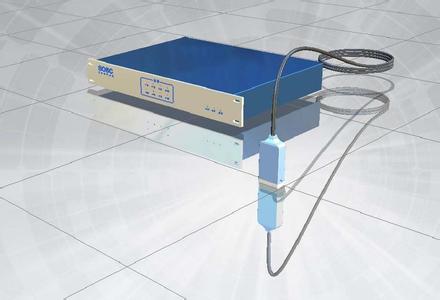 Optical fiber temperature detection technology is a new technology developed in recent years. Because the optical fiber itself has the advantages of good electrical insulation, no electromagnetic interference, no spark, can be used in flammable and explosive environments, etc. People attach great importance to the rapid development of various fiber optic temperature sensors. Currently studied optical fiber temperature sensors mainly use the principles of phase modulation, thermal radiation detection, fluorescence decay, semiconductor absorption, and fiber gratings.
Optical fiber temperature detection technology is a new technology developed in recent years. Because the optical fiber itself has the advantages of good electrical insulation, no electromagnetic interference, no spark, can be used in flammable and explosive environments, etc. People attach great importance to the rapid development of various fiber optic temperature sensors. Currently studied optical fiber temperature sensors mainly use the principles of phase modulation, thermal radiation detection, fluorescence decay, semiconductor absorption, and fiber gratings. Distributed fiber optic temperature sensors have the potential to provide a new way of monitoring production and reservoirs by continuously collecting temperature data along the entire length of completion. Because the change in the temperature profile of the well can be compared with other ground-acquired data (flow, water, wellhead pressure, etc.) as well as the open-hole log curves, the operator is provided with qualitative and quantitative information about the changes that occur downhole.
Traditional temperature measurement tools can only measure the temperature of a certain point at any given time. To test the full range of temperature, the point sensor can only be moved back and forth in the well to achieve, and inevitably affect the balance of the well environment. The advantage of the fiber-optic distributed temperature sensor is that the fiber does not need to move back and forth within the detection area, which can ensure that the temperature equilibrium state in the well is not affected. And because the fiber is placed in the capillary tube, fiber-optic distributed temperature sensors can be tested wherever the capillary tube can reach.
One of the most widely used fiber-optic sensors for downhole monitoring applications is the Raman backscattered distributed temperature probe, which has been widely used in the measurement of wellbore temperature profiles (especially in steam flooding). The distributed temperature sensor must take into account the measured points and connector attenuation. The problems encountered and solutions are:
a. Attenuation of signals by optical fibers and connectors. The solution is to minimize the number of connectors, use Bragg fiber grating sensors, and improve connector performance;
b. It is easy to be damaged when installed downhole. The solution is to use skilled workers. The optical fiber sensor needs an external protective layer to reduce the stress (including the stress caused by perforation and temperature). For optical fiber distributed temperature sensor systems, Sensa of the United Kingdom has always been in a leading position in technology. A series of products have been introduced, and in cooperation with major oil companies, they are actively exploring the application of optical fiber distributed temperature sensors in oil wells. CiDRA has also been researching fiber optic temperature sensors. At present, the company's temperature sensor specifications are: measurement range 0°C~175°C, accuracy ±1°C, resolution 0.1°C, long-term stability ±1°C/yr (150°C Continuous use).
So far, major petroleum production and service companies all over the world have invested heavily in the research and development of optical fiber sensors for reservoir evaluation. A considerable number of fiber sensor R&D organizations are also working in this emerging field. . It can be assumed that the next-generation fiber-optic sensors, after overcoming their own shortcomings and disadvantages, will be widely promoted and will be able to more effectively help them understand the dynamics of oil and gas production in real time.
Trailer Parts,Universal Trailer Parts,Trailer Parts Unlimited,Trailer Spares Parts
Ningbo City Yinzhou Ruican Machinery Co.,Ltd , https://www.ruicanmanufacturer.com